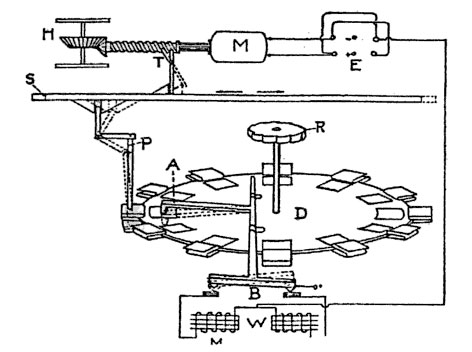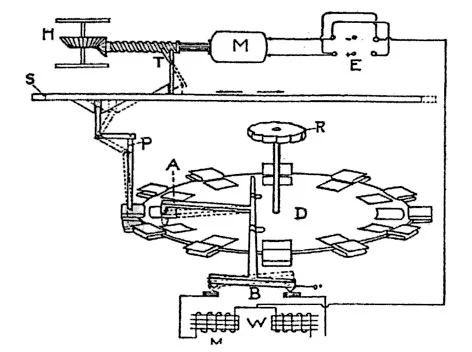Who was Thomas Ross?
Thomas Ross was an electrochemical expert from the University of Washington. He was among the first inventors to create a Machine that Thinks and could interpret given instructions. Unlike other inventors, Thomas wanted to create a machine that would use neural networks and act the same or better than humans. He wanted to bring a permanent change to task errors and human forgetfulness by building an effective thinking machine.
Early Life
Thomas Ross was born in 1909 at McClips, Washington. He was a student at the University of Washington. Ross was highly interested in robotics engineering. He got his original inspiration from the works of Clark Leonard Hull (1884-1952), an influential American psychologist. Clark studied logic and engineering and sought to explain learning and motivation by scientific laws of behaviour, and his followers Nicolas Rashevsky (1899-1972), Robert G. Krueger and H. D. Bernstein.
Quick Facts
- Full Name
- Thomas Ross
- Nationality
- American
- Fields of Expertise
- [“Inventor”,”Electrical Engineering”,”Engineering”]
- Institutions
- University of Washington
- Contributions
- Robotic Engineering
An article published in 1929 read:
Suppose it were possible to construct non-living devices, perhaps even of inorganic materials, which would perform the essential functions of the conditioned reflex. In that case, we should be able to organize these units into systems, which would show true trial-and-error learning with intelligent selection and the elimination of errors and other behaviour ordinarily classed as psychic… Learning and thought are here conceived as by no means necessarily a function of living protoplasm any more than is aerial locomotion…
The same year, Bernstein created a device intended to simulate several features of conditioned reflex training. It was demonstrated at a Psychological Conference in Urbana, Illinois, attracted wide interest, and the press referred to it as a mysterious mechanical brain.
In the 1930s, Thomas Ross followed the steps of his mentor, Bernstein. He started working on automata, which can be considered the first practical attempt to make a machine that would imitate a living creature in performance. The device seemed to suggest the routine test of animal intelligence in finding the way out of a maze. By trial and error, his maze-solver could learn to find its way to a correct goal on a system of toy-train tracks.
Thomas thought of expounding on robotic engineering after successful automata practical. In 1935, Ross shared ideas with one of his professors at the University of Washington, the psychologist Stevenson Smith (1883-1950), who used them to construct a Robot Rat. the device was a three-wheeled vehicle about 31 cm long and 22 cm wide.
It was an invention that attracted the attention of the press. The Time-newspaper, Monday, 16 September 1935 published:
In Seattle last week, Dr Stevenson Smith, University of Washington psychology professor, delighted colleagues and students by showing them a complicated “mechanical rat” which he and a helper had worked five years to perfect. Living rats, especially white ones, are favourites with animal psychologists who teach them to traverse complex mazes bristling with blind alleys, studying the effect on maze-learning of food, light, electric shock, drugs, blasts of air.
The Stevenson rat is impervious to all such lures and hindrances. Resembling a three-wheeled roller skate loaded with small motors, electromagnets and switches, the robot is set on a track containing twelve forks at each of which a wrong turn leads to a dead-end. The robot is first set to take the turn to the right at every fork. When this proves to be wrong and results in a bump against the dead-end, the “rat” goes into reverse, backs up past the fork, goes forward again, taking the correct left turn. This resets the controls in such a way as to enable the “rat” on the second try to negotiate the maze from start to finish without a single error.
“This machine,” said its inventor, “remembers what it has learned far better than any man or animal. No living organism can be depended upon to make no errors of this type after one trial.”

This report was a remarkable achievement for Thomas who was always passionate about building a machine that thinks.
Career
From a young age, Thomas’s life rotated around machine invention. Although nothing is shared about the companies he worked for, he must have been a great resource in the robotic industry.
What did Thomas Ross Invent?
The Mechanical Arm
In 1933, Ross built a mechanical arm powered by an electrical engine that explored five parallel paths in a kind of vertical maze, searching one after the other from the entrance to exit. The goal was to point out a solution to the maze. Rather complicated electrical circuits constituting the memory cells of this primitive robot were responsible for its performance. This device and other ideas of Ross were described in the article The Machines that Think for Scientific American from April 1933 (see the article of Thomas Ross in the April 1933 issue of Scientific American).
The Robot Rat
Thomas Ross was widely known for his Robot Rat device. Identical to humans, the machine could learn and effectively correct previous mistakes without assistance. The automatic learning feature of the Robot Rat was based on a rotating disk, so called Memory Disk. See the image below:

Here is how the Memory Disk worked:
Before the robot enters the maze, all 12 tabs on the memory disk are raised. The mechanism was designed to automatically drop one tab if the robot took the dead-end path to the right; therefore, a circuit was activated to prevent the car from turning right again at that particular split. The robot’s passed and failed trials are registered on the memory disk to form a pattern of depressed and raised tabs depending on the results. Every complete passage of the twelve “Y”-sections on the maze is recorded before the Robot Rat gets back to its starting position. At this point, the 12 tabs are in a complete pattern that prevents the robot from turning right (to the dead-end). In other words, the correct path is imprinted in the robot’s memory disk, and afterward, the robot doesn’t make an error when going through the maze.
Thomas Ross: Marriage, Divorce, Children, and Personal Life
Net Worth
Nothing is shared about Thomas Ross net worth.
Marriage
There is no information about Thomas’s marriage life.
Divorce
Nothing is known about Thomas’s divorce.
Children
Nothing is told about Thomas children.
Tragedy
Thomas Ross died in 2010.
Thomas Ross: Awards and Achievement
Although he invented an astounding Machine that thinks, no award or achievement is linked to him.
Thomas Ross: Published Works and Books
Psychological Review Magazine
After various successful practicals, Ross was ready to share his invention with the world. Therefore, he published a description of his Robot Rat in 1937. The article read:
“This machine runs through a twelve-unit, multiple-Y maze in which the twelve sections are so arranged that each has one blocked branch and one branch that opens into the stem of the next section. Placed at the beginning of this maze and set in motion by connection to an electrical supply, the machine will begin rolling through the maze on its three wheels. Being constructed with a tendency to turn to the right, it will, on coming to the forking of the first Y-section, run down the right-hand passage. If the passage is blocked (by a vertical wall at the end), the machine will retreat and find a different path to the left. Since the maze is so arranged that one passage in each section is open, the left-hand passage will now lead directly to the beginning of the next maze section. At that point, the machine will receive a ‘cue’ that it has entered a new section as it brushes its two metal ‘feelers’ against a pair of blocks set on the sides of the passage.
(…) On being again started through the maze, the machine will go from beginning to end without entering any of the blind passages which it entered on the first trip through, and every time after will repeat the performance without error.”
Machines that Think
This article was published in April 1933 by the Scientific American Publishing Company. Thomas shared an original copy to describe all his inventions but prioritized the Robot Rat device.
The article is published as a chapter and has a statement that reads, “Fascinating Operation of a Machine that “Remember.” Will they be useful to explain some mental processes?” (see the article of Thomas Ross in the April, 1933 issue of Scientific American).
NEXT UP…
- Edgar Codd – Complete Biography, History, and Inventions
- Pehr-Georg and Edvard Scheutz’s Differential Engine Explained – Everything You Need To Know
- History of the PowerMac: Apple’s PowerPC Desktop


